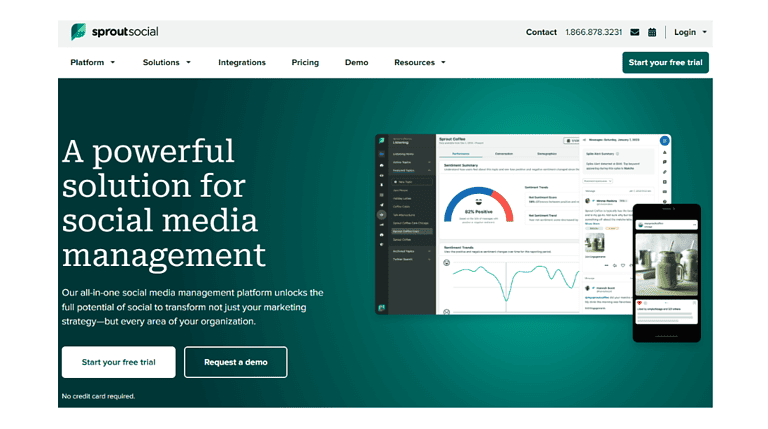How To Increase Organic Traffic Using SEO
Driving organic traffic was a long and challenging process, but with the right SEO strategies and tools, it’s now possible to rank higher on search engines and attract new customers.
However, many small business owners are still frustrated as their websites sit dormant at the bottom of page three in the Google search results. But fear not; increasing your organic traffic doesn’t have to be this difficult!
SEO has come a long way, and with some simple updates and planning, you, too, can see growth in your website traffic without spending a dime on Google ads.
If you purchase through our partner links, we get paid for the referral at no additional cost to you! For more information, visit my disclosure page.
In this post, I will share the top tactics that have worked for “The Process Hacker” and my clients to get more organic traffic in a few months.
With the strategies outlined here, your site can sit at the top of those search results in no time. Let’s jump in and get started increasing that all-important organic traffic!
What is Organic Search Traffic?
Organic search traffic refers to the visitors who arrive at your website after finding it through unpaid search engine results (as opposed to paid advertising).
Since these visitors typed in keywords related to your content, they’re often considered high-quality leads, potentially making them valuable for conversions and online business growth.
What is Search Engine Optimization (SEO)?
Search engine optimization (SEO) encompasses techniques for improving your website’s ranking in Google’s search results. The goal is to make your website clear and relevant to search engines, increasing its visibility to potential visitors.
Why You Need to Use SEO To Grow Your Website’s Organic Traffic
SEO aligns your website with how search engines understand and rank content. And it is crucial for increasing organic traffic and ensuring your website’s long-term success.
Here’s why:
1. Attract high-quality leads
Think of SEO as a magnet for your ideal customers. When people search for products or services related to your business, SEO helps your website appear at the top of the results.
These individuals aren’t just browsing – they have specific needs and are actively looking for solutions. By optimizing your website, you’ll connect with potential customers precisely when they’re primed to take the next step, whether purchasing, requesting a quote, or signing up for your newsletter.
2. Establish brand authority
Your website consistently ranks well in relevant search results, reinforcing your position as a knowledgeable and trustworthy source within your industry. Search engines prioritize quality content; SEO helps ensure your website demonstrates that expertise.
You solidify your reputation by appearing prominently in search results, increasing customer confidence and long-term brand recognition.
3. Outpace competitors
The online marketplace is a competitive arena. SEO gives you the tools to stay ahead of the curve. By optimizing your website for relevant keywords, you’ll gain visibility in search results while your competitors and SEO agencies may lag.
Think of it like a race – SEO gives you a head start and allows you to maintain your lead for the long haul.
4. Optimize the user experience
SEO goes beyond technical keywords and directly impacts visitors’ overall experience on your website. By focusing on SEO best practices, you’ll enhance the following aspects:
- Page speed: Fast load times are essential for a positive user experience and are a key factor search engines consider.
- Navigation: A well-structured website with clear navigation allows visitors to quickly find the information they seek.
- Mobile responsiveness: With mobile searches dominating, SEO ensures your website adapts to various screen sizes and provides a seamless experience across all devices.
- Content quality: SEO prioritizes delivering informative, well-written content directly addressing the searcher’s intent.
- Visual appeal: A visually appealing site with relevant images and graphics enhances user engagement and contributes to a positive brand perception.
The result? A website with a superior user experience encourages longer visits and improves your search engine rankings.
5. Drive sustainable results
SEO offers a key advantage over channels like paid advertising: its long-term value. While paid ads generate traffic only for the campaign’s duration, SEO establishes an ongoing presence in search results.
By consistently optimizing your website, you enhance its credibility with search engines. This leads to higher, more stable rankings that deliver a continuous stream of qualified visitors.
6. Gain valuable audience insights
SEO provides a wealth of data that goes beyond simply driving website traffic. You can glean crucial insights into your target audience by analyzing search queries, traffic patterns, and on-site behavior. This includes understanding:
- Customer pain points: What specific challenges does your audience seek to address?
- Interests and preferences: What types of content and information are most relevant to your target market?
- Language and terminology: How does your audience articulate its needs, using what keywords and phrases?
- Demographic trends: What are the general characteristics of your ideal customer (age, location, etc.)?
With this knowledge, you can make data-driven decisions to refine your content strategy, product development, and overall marketing approach. This targeted focus translates to increased engagement, conversions, and long-term brand loyalty.
7. Maximize marketing ROI
SEO offers a compelling advantage when it comes to marketing spend. Here’s how it outperforms many traditional channels:
- Cost-efficiency: While SEO requires time and resources, it avoids the recurring costs associated with paid advertising campaigns.
- Sustained value: SEO benefits accumulate as your website gains authority and establishes higher search engine rankings.
- Targeted reach: SEO attracts individuals seeking solutions in your niche, resulting in more qualified leads and increased conversion potential.
- Data-driven insights: SEO tools provide robust analytics, allowing you to track performance, refine your strategy, and demonstrate concrete results.
By strategically incorporating SEO, you maximize the impact of your marketing budget and create a foundation for sustainable, long-term growth.
How to Use SEO To Get More Traffic to Your Website
Master a proven framework to enhance your website’s search engine visibility and drive a consistent stream of qualified leads. This guide presents actionable SEO strategies designed to deliver lasting results.
Ready to take action? Access the full tutorial to explore in-depth explanations, tools, and tactics for these critical steps. Let’s elevate your website’s presence and maximize your organic traffic!
#1) Focus on Strategic Keyword Research
Strategic keyword research forms the foundation of any successful SEO campaign. It involves identifying the specific words and phrases your target audience uses online and searching for products or services related to your business.
Understanding this search intent allows you to optimize your website content accordingly, increasing its relevance and visibility. Here’s how to approach this crucial step:
- Brainstorm: Consider your industry, products, and target customer pain points to develop a list of potential keywords.
- Utilize Tools: Leverage keyword research tools like Google Keyword Planner or Semrush for in-depth analysis, search volume data, and competitor insights.
- Prioritize Relevance: Focus on keywords closely aligned with your business offerings, ensuring they accurately represent the solutions you provide.
- Analyze Search Volume and Difficulty: Strike a balance between keywords with high search demand and those within a realistic competitive range.
- Monitor and Refine: Track keyword performance and adjust your strategy based on data-driven insights for continuous improvement.
#2) Create a Content That Resonates
While keywords play a role, compelling content is essential for maximizing SEO success. Search engines favor content that aligns with searcher intent, provides valuable information, and establishes authority.
To craft content that achieves these goals:
- Focus on Search Intent: Analyze keywords to discern the underlying problems or questions your audience seeks to address.
- Demonstrate Expertise: Create content that establishes your knowledge within your niche, offering comprehensive and detailed insights.
- Provide Unique Value: Differentiate yourself with fresh perspectives, actionable solutions, or exclusive data.
- Prioritize Readability: Employ a clear writing structure using headings, short paragraphs, and visuals to aid in content consumption.
- Optimize for Engagement: To enhance content appeal, incorporate compelling elements like case studies, examples, or relevant statistics.
#3) Optimize for Visibility
Strategic optimization of your website’s titles, meta descriptions, and headings provides crucial signals to search engines, boosting its potential to rank prominently.
Compelling titles, incorporating target keywords, and concisely communicating your page’s focus to search engines. A well-crafted meta description offers informative summaries, influencing your website’s appearance in search results and encouraging user clicks.
Furthermore, optimizing internal headings (H1, H2, etc.) enhances content organization and facilitates how search engine crawlers understand your site’s hierarchy.
#4) Master Technical SEO
Technical SEO focuses on the behind-the-scenes elements of your website that directly impact how search engines crawl and understand its content. Addressing indexability and removing broken links can ensure your site is free of errors that hinder search engine crawlers.
Optimize your website structure with a clear hierarchy and XML sitemaps to improve navigation for search engine bots. Prioritize fast load times and mobile responsiveness, which are crucial ranking factors for today’s search algorithms.
By excelling in this area, you lay the groundwork for a website that consistently ranks well.
#5) Focus on Building Authority
Authority building is a fundamental element of a successful SEO strategy. Backlinks from reputable external websites act as endorsements for your content, signaling trustworthiness to search engines.
Prioritize creating exceptionally valuable resources such as comprehensive guides, data-driven research, or thought-leading industry analysis.
Proactively seek strategic partnerships and collaborations with relevant websites and influencers within your niche. Maintain an active presence in industry forums and online communities, offering valuable insights to further establish your expertise.
By consistently cultivating high-quality backlinks, you’ll solidify your website’s credibility and enhance its visibility in search results.
#6) Make the Site Great for the Mobile Experience
With most searches now happening on mobile devices, your website must be optimized for a seamless user experience across all screen sizes.
Check that your website employs responsive design principles, dynamically adjusting to deliver an optimal layout for desktops, tablets, and smartphones. Prioritize touch-friendly navigation elements and legible font sizes to ensure ease of use on smaller screens.
Monitor your website’s mobile performance through tools like Google’s Mobile-Friendly Test and PageSpeed Insights to identify and rectify any issues hindering the mobile experience.
#7) Prioritize Site Speed
Site speed is crucial to user experience and search engine rankings. To achieve optimal load times, implement technical optimizations such as image compression, code minification, and effective caching strategies.
Leverage tools like Google’s PageSpeed Insights to identify bottleneck areas and implement data-driven improvements. By delivering a seamless, responsive web experience, you’ll enhance user satisfaction, reduce bounce rates, and boost your SEO performance.
#8) Take Advantage of Local SEO
Optimizing for local search is crucial if your business caters to a specific geographic area. Claim your Google Business Profile and ensure it is accurate and up-to-date.
Optimize your website content with location-specific keywords and ensure your business address (NAP—Name, Address, Phone Number) is consistently listed across the web. Encourage customer reviews on platforms like Google and build citations (mentions of your business) on local directories and relevant websites.
By establishing a solid local presence, you’ll gain prominence in “near me” searches and attract more customers in your immediate vicinity.
#9) Study Data-Driven Insights
Never underestimate the power of analytics! Leverage tools like Google Analytics and Google Search Console to track your website’s performance.
Analyze search queries leading visitors to your site, monitor keyword rankings, and identify top-performing pages. These insights will reveal valuable information about audience preferences and inform your keyword strategy.
By making data-driven decisions, you’ll fine-tune your SEO approach, maximize campaign effectiveness, and achieve quantifiable results.
#10) Stay Consistent
SEO is an ongoing process, not a one-time fix. Establish a content creation calendar for regular updates and aim to publish fresh, high-quality content consistently.
Steadily work to acquire relevant backlinks and monitor your site’s technical health for ongoing optimization. Actively track SEO metrics to measure progress and adapt your strategy for continuous improvement.
With consistent effort and dedication, you’ll establish authority in your niche, maintain high search rankings, and cultivate a steady stream of organic traffic.
Key Considerations For Ranking Higher on the Search Engines

Optimize for Evolving Algorithms
Stay informed about changes in search engine algorithms and ranking factors. Adapt your strategy to address updates emphasizing user experience, semantic search, and emerging technologies like voice and image search.
Prioritize Search Intent Alignment
Develop a deep understanding of your audience’s search intent. Ensure your content offers comprehensive, actionable solutions to the problems and questions your target market seeks to resolve.
Balance Technical Excellence with Human Appeal
While technical optimizations are vital, don’t neglect the importance of compelling storytelling and readability. Prioritize a clear, conversational writing style, well-structured content, and the strategic use of visuals to enhance the overall user experience.
Taking it to the Next Level: Try Out Semrush
The problem is that optimizing your site for search engines can be tricky without the right SEO automation tools. That’s where Semrush comes in.
Semrush is an SEO tool that analyzes your website and identifies areas for improvement. It also tracks your website’s traffic, monitors your competition, and optimizes your content for better search engine rankings.
By using Semrush, you’ll clearly understand what drives your website traffic and be able to make data-driven decisions to increase organic search traffic. So, if you want to stay ahead of the competition, Semrush is the must-have tool for your SEO strategy.
Final Thoughts on Organic Traffic Growth
In summary, incorporating effective SEO strategies is crucial for boosting organic traffic and increasing online visibility.
Various factors contribute to a successful SEO campaign, from conducting thorough keyword research and optimizing your website’s on-page elements to building quality backlinks and creating valuable content.
By constantly monitoring and analyzing your website’s performance using tools like Semrush, you can stay on top of the latest trends and continue improving your SEO efforts. So why wait?
Put these tips into action and watch as your organic traffic grows. And if you’re looking for a comprehensive tool to help with all aspects of SEO, be sure to give Semrush a try!
With its user-friendly interface and vast array of features designed to enhance your online presence, Semrush is the perfect companion for any business striving for success in the digital world.
So go ahead, give Semrush a shot today, and see the results for yourself!








